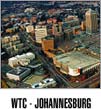THE TRADING REVOLUTION
When the National Bureau of Economic Research (NBER) officially declared that the recession was over in November 2001, millions of unemployed workers around the country reacted with skepticism, if not anger. Just as the NBER was making its pronouncement, the unemployment rate hit a nine-year high of 6.4 percent. And even though that rate has fallen slightly, the economy still is not producing any new jobs. Of course, the NBER is correct in its assessment. Employment growth is always one of the last indicators to improve in a recovery. Indeed, recent economic data in both the goods-producing sector and in the service sector point to a strengthening recovery that will almost certainly bring down the unemployment rate into next year.
 This recovery is different in that the recession that preceded it was different. The United States, and much of the world for that matter, is undergoing a second economic revolution. And as with most non-violent structural changes in life, it is only after the fact that we realize the revolution has occurred! The technology boom that started in the 1980s is reshaping our economy, the way we do business and our lives. During the 1990s, firms invested heavily in capital equipment, adding new technology and creating newer, more modern technologically advanced plants. The especially heavy spending in preparation of the Y2K bug accelerated spending on computers in particular, leading to a dramatic slowdown into the current decade. Capital spending fell off dramatically at the same time that the Internet bubble burst and bull market in stocks turned into a bear. A recession resulted, which by historical standards was very mild outside of manufacturing. This recovery is different in that the recession that preceded it was different. The United States, and much of the world for that matter, is undergoing a second economic revolution. And as with most non-violent structural changes in life, it is only after the fact that we realize the revolution has occurred! The technology boom that started in the 1980s is reshaping our economy, the way we do business and our lives. During the 1990s, firms invested heavily in capital equipment, adding new technology and creating newer, more modern technologically advanced plants. The especially heavy spending in preparation of the Y2K bug accelerated spending on computers in particular, leading to a dramatic slowdown into the current decade. Capital spending fell off dramatically at the same time that the Internet bubble burst and bull market in stocks turned into a bear. A recession resulted, which by historical standards was very mild outside of manufacturing.
 But that capital spending and the advent of the Internet for business-to-business as well as consumer transactions have placed right in the middle of a remarkable revolution in our economy. Productivity of the American workforce is at its highest level since World War II, and is in all likelihood even higher as it is more difficult to measure productivity in services. That higher productivity is terrific for long-term growth, in that firms will be able to afford to pay workers more without raising prices. But in the short turn, this higher productivity means that firms can meet higher demands for goods and services without expanding plans, buying new equipment, investing in technology or hiring new workers. Coupled with some uncertainty by businesses about whether the recovery is “for real,” this higher productivity has led to the no-jobs recovery. But this extra capacity for most firms is about to run out. Most firms will literally be forced to hire new workers, upgrade technology, modernize equipment and expand plant capacity to meet any more demand. So the recovery will accelerate. But our lives will never be the same. But that capital spending and the advent of the Internet for business-to-business as well as consumer transactions have placed right in the middle of a remarkable revolution in our economy. Productivity of the American workforce is at its highest level since World War II, and is in all likelihood even higher as it is more difficult to measure productivity in services. That higher productivity is terrific for long-term growth, in that firms will be able to afford to pay workers more without raising prices. But in the short turn, this higher productivity means that firms can meet higher demands for goods and services without expanding plans, buying new equipment, investing in technology or hiring new workers. Coupled with some uncertainty by businesses about whether the recovery is “for real,” this higher productivity has led to the no-jobs recovery. But this extra capacity for most firms is about to run out. Most firms will literally be forced to hire new workers, upgrade technology, modernize equipment and expand plant capacity to meet any more demand. So the recovery will accelerate. But our lives will never be the same.
 With the Internet firmly a part of business, and our personal lives for that matter, geographic borders have become largely meaningless. Firms can relocate production much more easily, to countries with lower unit costs of labor. This trend is firmly in place in manufacturing and is here to stay. A growing trend is that some service oriented jobs can also be moved elsewhere, to China and India in particular, where educational levels of the workforce are sufficient to meet the needs of a high-tech world. The United States economy is shifting from a manufacturing, goods-producing one into a service economy where information, knowledge, ideas and data are the products we trade. International trade is a growing part of our national economy and of the global economy as well. The growth of this sector is based on the principal of comparative advantage, whereby the country that can most efficiently produce a product or provide service is the location of choice for firms. This means that the United States will provide more high-tech, information based services and high technology and biotech based products for the world. In return, the world will provide us with the consumer goods we want as well as more mundane services like call centers and the like. That is not to say that some high-tech jobs will move off-shore, they most certainly will. With the Internet firmly a part of business, and our personal lives for that matter, geographic borders have become largely meaningless. Firms can relocate production much more easily, to countries with lower unit costs of labor. This trend is firmly in place in manufacturing and is here to stay. A growing trend is that some service oriented jobs can also be moved elsewhere, to China and India in particular, where educational levels of the workforce are sufficient to meet the needs of a high-tech world. The United States economy is shifting from a manufacturing, goods-producing one into a service economy where information, knowledge, ideas and data are the products we trade. International trade is a growing part of our national economy and of the global economy as well. The growth of this sector is based on the principal of comparative advantage, whereby the country that can most efficiently produce a product or provide service is the location of choice for firms. This means that the United States will provide more high-tech, information based services and high technology and biotech based products for the world. In return, the world will provide us with the consumer goods we want as well as more mundane services like call centers and the like. That is not to say that some high-tech jobs will move off-shore, they most certainly will.
 For the United States firm to survive this revolution, it must become very competitive in a global marketplace and embrace international trade. Locally, Charleston is fortunate to have two entities that help in this process. The State Ports Authority handles millions of tons of goods shipments in and out of the U.S. and acts in an economic development capacity for the state, especially in luring large firms here. The S.C. World Trade Center, also located in Charleston, gets much less press than the State Ports Authority but also plays a vital role in our economy and international trade. The World Trade Center’s clients tend to be medium and small firms that understand the necessity of using international trade to grow business in a global marketplace. The World Trade Center can offer the expertise to aid firms in this endeavor, often helping the firm become a client of the port. The successful firm of the future will not fear international trade but embrace it as an opportunity to grow in a world that almost literally seems to be shrinking; failure to do so will lead to a failed firm. For the United States firm to survive this revolution, it must become very competitive in a global marketplace and embrace international trade. Locally, Charleston is fortunate to have two entities that help in this process. The State Ports Authority handles millions of tons of goods shipments in and out of the U.S. and acts in an economic development capacity for the state, especially in luring large firms here. The S.C. World Trade Center, also located in Charleston, gets much less press than the State Ports Authority but also plays a vital role in our economy and international trade. The World Trade Center’s clients tend to be medium and small firms that understand the necessity of using international trade to grow business in a global marketplace. The World Trade Center can offer the expertise to aid firms in this endeavor, often helping the firm become a client of the port. The successful firm of the future will not fear international trade but embrace it as an opportunity to grow in a world that almost literally seems to be shrinking; failure to do so will lead to a failed firm.
 For the U.S. worker to survive this revolution, we must also embrace the new technologies available and the Internet and understand that international trade can make our lives better. This is not an easy thing to do but it is necessary because we are not going back to the way we did things in the 50s! Workers will have to retrain in various ways, whether that means physically going through continuing education courses at work or in classrooms or learning new techniques in a virtual classroom online. We will have to be more flexible in our work environment, taking on a greater variety of tasks in the modern workplace. The worker will have to be more mobile, willing to move from one area of the country to another or maybe even between countries! Talk about scary but this is also an opportunity for wealth creation and adventure. Once again, the World Trade Center and its members can help companies that need retraining services for workers. For the U.S. worker to survive this revolution, we must also embrace the new technologies available and the Internet and understand that international trade can make our lives better. This is not an easy thing to do but it is necessary because we are not going back to the way we did things in the 50s! Workers will have to retrain in various ways, whether that means physically going through continuing education courses at work or in classrooms or learning new techniques in a virtual classroom online. We will have to be more flexible in our work environment, taking on a greater variety of tasks in the modern workplace. The worker will have to be more mobile, willing to move from one area of the country to another or maybe even between countries! Talk about scary but this is also an opportunity for wealth creation and adventure. Once again, the World Trade Center and its members can help companies that need retraining services for workers.
 From a personal perspective, I can attest to the changes in life this revolution is bringing. My wife is a computer scientist, who is constantly forced to learn new things. A course she taught three years ago may have little if any resemblance to a course with the precise same title taught today. Our seven-year- old son is already adept and using the computer and is becoming adept at “surfing the net.” Talking with someone in Japan by email is no different to him than talking to a neighbor across the street! Our three-year-old daughter is already playing games on the computer and learning something about the Internet. Who knows what the world will be like when our five-month twin girls start school, much less grow up! As for me, my wife claims I am a gadget geek and I have yet to find someone to disagree with her, but trying to keep up to do economic forecasts is no easy chore. The Internet has made my work somewhat easier. I have a wealth of information at my fingertips that I can easily search; of course, there is also a lot of nonsense out on the World Wide Web too, another facet of this economic revolution that we have to put up with. From a personal perspective, I can attest to the changes in life this revolution is bringing. My wife is a computer scientist, who is constantly forced to learn new things. A course she taught three years ago may have little if any resemblance to a course with the precise same title taught today. Our seven-year- old son is already adept and using the computer and is becoming adept at “surfing the net.” Talking with someone in Japan by email is no different to him than talking to a neighbor across the street! Our three-year-old daughter is already playing games on the computer and learning something about the Internet. Who knows what the world will be like when our five-month twin girls start school, much less grow up! As for me, my wife claims I am a gadget geek and I have yet to find someone to disagree with her, but trying to keep up to do economic forecasts is no easy chore. The Internet has made my work somewhat easier. I have a wealth of information at my fingertips that I can easily search; of course, there is also a lot of nonsense out on the World Wide Web too, another facet of this economic revolution that we have to put up with.
.jpg) As scary as the current economy is, it is little different from the Industrial Revolution when agricultural workers in the field were undoubtedly wondering how they would transition to work in factories. To be sure, there was uncertainty, fear and even a little anger back then, but the United States became an economic superpower and our lives were improved dramatically – at least in the opinions of most people. This time will be no different. We as workers will feel scared and frustrated and perhaps even a bit angry at times. But as our economy restructures itself once more, our lives will end up better for it. I firmly believe that by cooperating through international trade, we can eliminate hunger and poverty, prevent or cure many diseases and improve the standards of living for people that wish to participate in the economic revolution we are in. The light at the end of this economic revolution’s tunnel is bright – we just aren’t used to a tunnel with curves! As scary as the current economy is, it is little different from the Industrial Revolution when agricultural workers in the field were undoubtedly wondering how they would transition to work in factories. To be sure, there was uncertainty, fear and even a little anger back then, but the United States became an economic superpower and our lives were improved dramatically – at least in the opinions of most people. This time will be no different. We as workers will feel scared and frustrated and perhaps even a bit angry at times. But as our economy restructures itself once more, our lives will end up better for it. I firmly believe that by cooperating through international trade, we can eliminate hunger and poverty, prevent or cure many diseases and improve the standards of living for people that wish to participate in the economic revolution we are in. The light at the end of this economic revolution’s tunnel is bright – we just aren’t used to a tunnel with curves!
|
 This recovery is different in that the recession that preceded it was different. The United States, and much of the world for that matter, is undergoing a second economic revolution. And as with most non-violent structural changes in life, it is only after the fact that we realize the revolution has occurred! The technology boom that started in the 1980s is reshaping our economy, the way we do business and our lives. During the 1990s, firms invested heavily in capital equipment, adding new technology and creating newer, more modern technologically advanced plants. The especially heavy spending in preparation of the Y2K bug accelerated spending on computers in particular, leading to a dramatic slowdown into the current decade. Capital spending fell off dramatically at the same time that the Internet bubble burst and bull market in stocks turned into a bear. A recession resulted, which by historical standards was very mild outside of manufacturing.
This recovery is different in that the recession that preceded it was different. The United States, and much of the world for that matter, is undergoing a second economic revolution. And as with most non-violent structural changes in life, it is only after the fact that we realize the revolution has occurred! The technology boom that started in the 1980s is reshaping our economy, the way we do business and our lives. During the 1990s, firms invested heavily in capital equipment, adding new technology and creating newer, more modern technologically advanced plants. The especially heavy spending in preparation of the Y2K bug accelerated spending on computers in particular, leading to a dramatic slowdown into the current decade. Capital spending fell off dramatically at the same time that the Internet bubble burst and bull market in stocks turned into a bear. A recession resulted, which by historical standards was very mild outside of manufacturing. But that capital spending and the advent of the Internet for business-to-business as well as consumer transactions have placed right in the middle of a remarkable revolution in our economy. Productivity of the American workforce is at its highest level since World War II, and is in all likelihood even higher as it is more difficult to measure productivity in services. That higher productivity is terrific for long-term growth, in that firms will be able to afford to pay workers more without raising prices. But in the short turn, this higher productivity means that firms can meet higher demands for goods and services without expanding plans, buying new equipment, investing in technology or hiring new workers. Coupled with some uncertainty by businesses about whether the recovery is “for real,” this higher productivity has led to the no-jobs recovery. But this extra capacity for most firms is about to run out. Most firms will literally be forced to hire new workers, upgrade technology, modernize equipment and expand plant capacity to meet any more demand. So the recovery will accelerate. But our lives will never be the same.
But that capital spending and the advent of the Internet for business-to-business as well as consumer transactions have placed right in the middle of a remarkable revolution in our economy. Productivity of the American workforce is at its highest level since World War II, and is in all likelihood even higher as it is more difficult to measure productivity in services. That higher productivity is terrific for long-term growth, in that firms will be able to afford to pay workers more without raising prices. But in the short turn, this higher productivity means that firms can meet higher demands for goods and services without expanding plans, buying new equipment, investing in technology or hiring new workers. Coupled with some uncertainty by businesses about whether the recovery is “for real,” this higher productivity has led to the no-jobs recovery. But this extra capacity for most firms is about to run out. Most firms will literally be forced to hire new workers, upgrade technology, modernize equipment and expand plant capacity to meet any more demand. So the recovery will accelerate. But our lives will never be the same. With the Internet firmly a part of business, and our personal lives for that matter, geographic borders have become largely meaningless. Firms can relocate production much more easily, to countries with lower unit costs of labor. This trend is firmly in place in manufacturing and is here to stay. A growing trend is that some service oriented jobs can also be moved elsewhere, to China and India in particular, where educational levels of the workforce are sufficient to meet the needs of a high-tech world. The United States economy is shifting from a manufacturing, goods-producing one into a service economy where information, knowledge, ideas and data are the products we trade. International trade is a growing part of our national economy and of the global economy as well. The growth of this sector is based on the principal of comparative advantage, whereby the country that can most efficiently produce a product or provide service is the location of choice for firms. This means that the United States will provide more high-tech, information based services and high technology and biotech based products for the world. In return, the world will provide us with the consumer goods we want as well as more mundane services like call centers and the like. That is not to say that some high-tech jobs will move off-shore, they most certainly will.
With the Internet firmly a part of business, and our personal lives for that matter, geographic borders have become largely meaningless. Firms can relocate production much more easily, to countries with lower unit costs of labor. This trend is firmly in place in manufacturing and is here to stay. A growing trend is that some service oriented jobs can also be moved elsewhere, to China and India in particular, where educational levels of the workforce are sufficient to meet the needs of a high-tech world. The United States economy is shifting from a manufacturing, goods-producing one into a service economy where information, knowledge, ideas and data are the products we trade. International trade is a growing part of our national economy and of the global economy as well. The growth of this sector is based on the principal of comparative advantage, whereby the country that can most efficiently produce a product or provide service is the location of choice for firms. This means that the United States will provide more high-tech, information based services and high technology and biotech based products for the world. In return, the world will provide us with the consumer goods we want as well as more mundane services like call centers and the like. That is not to say that some high-tech jobs will move off-shore, they most certainly will. For the United States firm to survive this revolution, it must become very competitive in a global marketplace and embrace international trade. Locally, Charleston is fortunate to have two entities that help in this process. The State Ports Authority handles millions of tons of goods shipments in and out of the U.S. and acts in an economic development capacity for the state, especially in luring large firms here. The S.C. World Trade Center, also located in Charleston, gets much less press than the State Ports Authority but also plays a vital role in our economy and international trade. The World Trade Center’s clients tend to be medium and small firms that understand the necessity of using international trade to grow business in a global marketplace. The World Trade Center can offer the expertise to aid firms in this endeavor, often helping the firm become a client of the port. The successful firm of the future will not fear international trade but embrace it as an opportunity to grow in a world that almost literally seems to be shrinking; failure to do so will lead to a failed firm.
For the United States firm to survive this revolution, it must become very competitive in a global marketplace and embrace international trade. Locally, Charleston is fortunate to have two entities that help in this process. The State Ports Authority handles millions of tons of goods shipments in and out of the U.S. and acts in an economic development capacity for the state, especially in luring large firms here. The S.C. World Trade Center, also located in Charleston, gets much less press than the State Ports Authority but also plays a vital role in our economy and international trade. The World Trade Center’s clients tend to be medium and small firms that understand the necessity of using international trade to grow business in a global marketplace. The World Trade Center can offer the expertise to aid firms in this endeavor, often helping the firm become a client of the port. The successful firm of the future will not fear international trade but embrace it as an opportunity to grow in a world that almost literally seems to be shrinking; failure to do so will lead to a failed firm. For the U.S. worker to survive this revolution, we must also embrace the new technologies available and the Internet and understand that international trade can make our lives better. This is not an easy thing to do but it is necessary because we are not going back to the way we did things in the 50s! Workers will have to retrain in various ways, whether that means physically going through continuing education courses at work or in classrooms or learning new techniques in a virtual classroom online. We will have to be more flexible in our work environment, taking on a greater variety of tasks in the modern workplace. The worker will have to be more mobile, willing to move from one area of the country to another or maybe even between countries! Talk about scary but this is also an opportunity for wealth creation and adventure. Once again, the World Trade Center and its members can help companies that need retraining services for workers.
For the U.S. worker to survive this revolution, we must also embrace the new technologies available and the Internet and understand that international trade can make our lives better. This is not an easy thing to do but it is necessary because we are not going back to the way we did things in the 50s! Workers will have to retrain in various ways, whether that means physically going through continuing education courses at work or in classrooms or learning new techniques in a virtual classroom online. We will have to be more flexible in our work environment, taking on a greater variety of tasks in the modern workplace. The worker will have to be more mobile, willing to move from one area of the country to another or maybe even between countries! Talk about scary but this is also an opportunity for wealth creation and adventure. Once again, the World Trade Center and its members can help companies that need retraining services for workers. From a personal perspective, I can attest to the changes in life this revolution is bringing. My wife is a computer scientist, who is constantly forced to learn new things. A course she taught three years ago may have little if any resemblance to a course with the precise same title taught today. Our seven-year- old son is already adept and using the computer and is becoming adept at “surfing the net.” Talking with someone in Japan by email is no different to him than talking to a neighbor across the street! Our three-year-old daughter is already playing games on the computer and learning something about the Internet. Who knows what the world will be like when our five-month twin girls start school, much less grow up! As for me, my wife claims I am a gadget geek and I have yet to find someone to disagree with her, but trying to keep up to do economic forecasts is no easy chore. The Internet has made my work somewhat easier. I have a wealth of information at my fingertips that I can easily search; of course, there is also a lot of nonsense out on the World Wide Web too, another facet of this economic revolution that we have to put up with.
From a personal perspective, I can attest to the changes in life this revolution is bringing. My wife is a computer scientist, who is constantly forced to learn new things. A course she taught three years ago may have little if any resemblance to a course with the precise same title taught today. Our seven-year- old son is already adept and using the computer and is becoming adept at “surfing the net.” Talking with someone in Japan by email is no different to him than talking to a neighbor across the street! Our three-year-old daughter is already playing games on the computer and learning something about the Internet. Who knows what the world will be like when our five-month twin girls start school, much less grow up! As for me, my wife claims I am a gadget geek and I have yet to find someone to disagree with her, but trying to keep up to do economic forecasts is no easy chore. The Internet has made my work somewhat easier. I have a wealth of information at my fingertips that I can easily search; of course, there is also a lot of nonsense out on the World Wide Web too, another facet of this economic revolution that we have to put up with..jpg) As scary as the current economy is, it is little different from the Industrial Revolution when agricultural workers in the field were undoubtedly wondering how they would transition to work in factories. To be sure, there was uncertainty, fear and even a little anger back then, but the United States became an economic superpower and our lives were improved dramatically – at least in the opinions of most people. This time will be no different. We as workers will feel scared and frustrated and perhaps even a bit angry at times. But as our economy restructures itself once more, our lives will end up better for it. I firmly believe that by cooperating through international trade, we can eliminate hunger and poverty, prevent or cure many diseases and improve the standards of living for people that wish to participate in the economic revolution we are in. The light at the end of this economic revolution’s tunnel is bright – we just aren’t used to a tunnel with curves!
As scary as the current economy is, it is little different from the Industrial Revolution when agricultural workers in the field were undoubtedly wondering how they would transition to work in factories. To be sure, there was uncertainty, fear and even a little anger back then, but the United States became an economic superpower and our lives were improved dramatically – at least in the opinions of most people. This time will be no different. We as workers will feel scared and frustrated and perhaps even a bit angry at times. But as our economy restructures itself once more, our lives will end up better for it. I firmly believe that by cooperating through international trade, we can eliminate hunger and poverty, prevent or cure many diseases and improve the standards of living for people that wish to participate in the economic revolution we are in. The light at the end of this economic revolution’s tunnel is bright – we just aren’t used to a tunnel with curves!